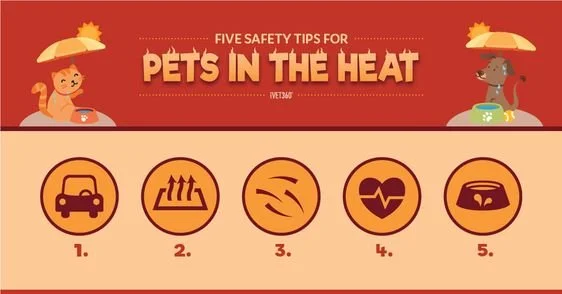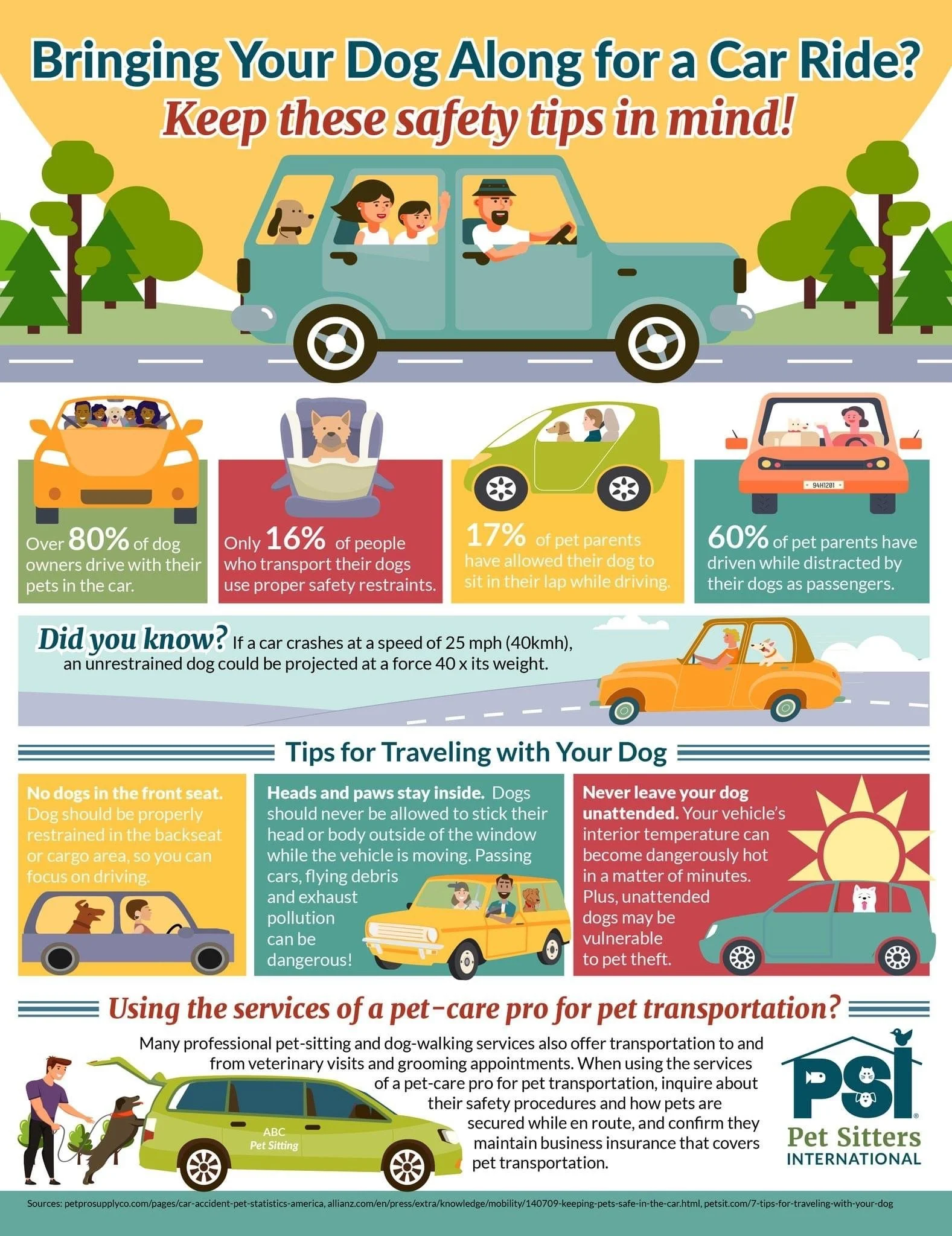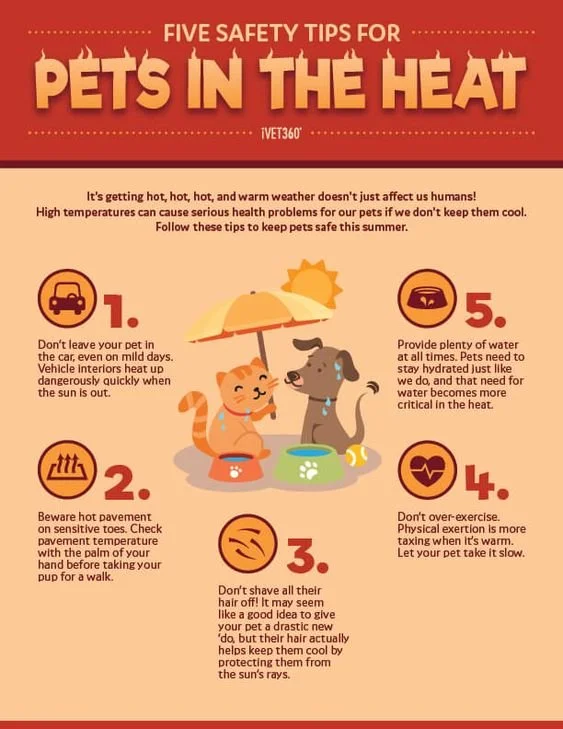Seasonal Pet Safety Guide: Spring and Summer Tips for Dog Walking Clients
As the days grow longer and the sun shines brighter, it’s time to enjoy the great outdoors with our furry companions. Dogs, in particular, rely on us to provide them with cool and comfortable spaces where they can rest and recharge during hot days. Whether you’re strolling through the park, hiking scenic trails, or hitting the beach, your dog deserves a safe and enjoyable experience. Rebecca Greenstein, veterinary medical advisor for Rover pet sitting and dog walking service, tells AARP that, “people consistently overestimate their pet’s heat tolerance.” Here’s our comprehensive guide to keeping your beloved pets healthy and happy during the warmer months.
You can shop our Amazon storefront for the items mentioned below!
Beat the Heat: Keeping Your Dog Cool
Provide Shade and Hydration
Shady Spots: Dogs need a cool place to rest during hot days. Set up a shady spot in your backyard or find a tree-lined area during walks. Invest in cooling mats or elevated beds designed to keep pets cool during hot weather. These products often feature gel-infused materials or breathable fabrics that help regulate your dog's body temperature, providing relief from the heat.
Fresh Water: Keep your dog hydrated by providing plenty of cool, fresh water. Consider using an insulated dog bowl to maintain a refreshing temperature. Place water bowls in shaded areas both indoors and outdoors to encourage hydration throughout the day. Keeping your dog well-hydrated is essential for regulating body temperature and preventing heat-related illnesses.
Avoid Hot Cars
Never Leave Your Dog in a Closed Vehicle: Even on moderately warm days, the temperature inside a car can soar to dangerous levels within minutes. Leave your furry friend at home or bring them along if you can ensure their safety. Dogs are highly susceptible to heatstroke, a life-threatening condition that occurs when their body temperature rises to dangerous levels. Symptoms of heatstroke include excessive panting, drooling, rapid heartbeat, weakness, and collapse. Without immediate intervention, heatstroke can be fatal. Many pet owners mistakenly believe that leaving their dog in a car for just a few minutes is harmless. However, even a short period of time in a hot car can have devastating consequences for your pet's health. Dogs cannot regulate their body temperature as effectively as humans, making them particularly vulnerable to heat-related illnesses. When driving with your pet, ensure you have a backup plan and a car first aid kit in case of an emergency.
Free Download!
Download this quick reference guide created by Pet Sitters International!
Paw Protection
Hot Surfaces: Avoid exposing your dog to scorching asphalt or sand. These surfaces can burn their paw pads. Opt for early morning or evening walks when the ground is cooler. Before heading out for a walk, place the back of your hand on the pavement or sand for a few seconds. If it feels too hot for you, it's too hot for your dog's paws. After returning home from a walk, soothe your dog's paw pads with a cool water rinse or by placing their paws in a shallow pan of cool water. This helps alleviate any discomfort and reduces inflammation.
Brachycephalic Breeds: Short-nosed breeds like Bulldogs, Boxers, and Pekingese are less efficient at panting. Keep them indoors with air-conditioning to prevent heat-related issues. Limit outdoor activities, particularly during the peak heat hours. Brachycephalic breeds are less efficient at cooling themselves, increasing their risk of heatstroke and exhaustion. When exercising your brachycephalic dog, opt for short walks in the early morning or late evening when temperatures are cooler. Avoid strenuous activities and keep an eye out for signs of overheating, such as excessive panting or difficulty breathing.
Health and Wellness: Keeping Your Dog Healthy
Vaccinations and Preventive Care
Up-to-Date Vaccinations: Dogs spend more time outdoors in summer, so ensure their vaccinations are current. Summer is prime time for parasites like fleas, ticks, and mosquitoes, which can transmit dangerous diseases to dogs. Vaccinations for diseases such as Lyme disease, heartworm, and tick-borne illnesses like Lyme disease and Ehrlichiosis provide crucial protection against these vector-borne threats. If you plan to board your dog at a kennel or travel with them during the summer months, many facilities and destinations require proof of up-to-date vaccinations. Ensuring your dog's vaccinations are current not only protects their health but also ensures they meet the necessary requirements for boarding and travel.
Dogs Love Grass!
Dogs are curious and may inadvertently ingest chemicals from treated lawns while sniffing, licking, or grooming themselves.
Avoid Chemically Treated Lawns: Dogs' paw pads are highly absorbent, making them susceptible to absorbing chemicals from treated lawns. Many commercial lawn care products, including pesticides, herbicides, and fertilizers, contain chemicals that can be harmful to dogs if ingested or absorbed through the skin. Even brief contact can result in skin irritation, burns, or the absorption of toxic substances into the bloodstream. Keep dogs off lawns treated with chemicals or fertilizers for at least 24 hours to allow time for the chemicals to dry or dissipate and reduce the risk of your dog coming into contact with potentially harmful substances.
Grooming: A well-maintained coat allows for better air circulation, helping your dog regulate their body temperature more effectively. Regular brushing removes loose fur, dirt, and debris from your dog's coat, preventing matting and allowing air to flow freely through their fur. Dogs with long or dense coats are more susceptible to overheating during hot weather. Mats and tangles in their fur can trap heat close to the skin, making it difficult for them to cool down. Keeping your dog's coat clean and free of mats is essential for their comfort and hygiene. Mats can become tight and painful, leading to skin irritation, sores, and even infections. Grooming removes tangles and prevents mats from forming, ensuring your dog stays clean, comfortable, and healthy.
Flea, Tick, and Heartworm Prevention: Consult your veterinarian for the best preventive medications. Your veterinarian is your best source of information when it comes to selecting the right preventive medications for your dog. Schedule regular veterinary check-ups to discuss your dog's preventive care needs and ensure they remain up-to-date on their parasite prevention regimen. While parasites may be more active during the summer months, they can still pose a risk to your dog year-round. To maintain continuous protection, consider implementing year-round flea, tick, and heartworm prevention, as recommended by your veterinarian. It’s also a great idea to have a Tick Remover Kit handy!
Beach Safety: Fun in the Sun
Shade and Fresh Water
Beach Tent or Pen: Create a shaded area for your dog to rest. Bring along a beach tent or set up their own outdoor pen. Place a comfortable, water-resistant mat or blanket inside the shelter for your dog to rest on. While your dog enjoys their shaded retreat, be sure to keep a watchful eye on them to ensure their safety and well-being. Check on them regularly, especially if they are prone to digging or attempting to escape from the shelter.
Hydration: Provide ample fresh water to keep your dog cool and hydrated. Consider bringing along a portable water bowl and a supply of fresh water to keep your dog hydrated throughout the day. Dehydration is a common concern for dogs spending time outdoors, especially in warm weather, so it's essential to encourage regular hydration.
Sun Protection
Sunburn: Dogs with short hair or light-colored coats are more prone to sunburn, as their skin has less natural protection against UV rays. Additionally, dogs with pink noses and ears are particularly vulnerable to sunburn and may develop painful redness, swelling, or even blisters if exposed to prolonged sun exposure. Apply pet-safe sunblock to their ears and nose. Choose a pet-safe sunblock specifically formulated for dogs to protect their sensitive skin from harmful UV rays. Avoid using human sunscreen products, as they may contain ingredients that are toxic to dogs if ingested. Look for sunblocks designed for pets that offer broad-spectrum protection against both UVA and UVB rays.
Free Download!
Download this quick reference guide created by ivet360.com!
Remember, our canine companions rely on us for their well-being. By following these seasonal safety tips, you’ll ensure that your dog enjoys the sunny days without any worries. Happy dog walking! 🐾
All the bestie, Steph
P.S. - Shouts out to FeedSpot for adding the Furbaby Bestie Blog to their “30 Best Los Angeles Pet Blogs and Websites” list!
Disclaimer: This blog post provides general advice. Always consult your veterinarian for personalized guidance based on your dog’s specific needs.





